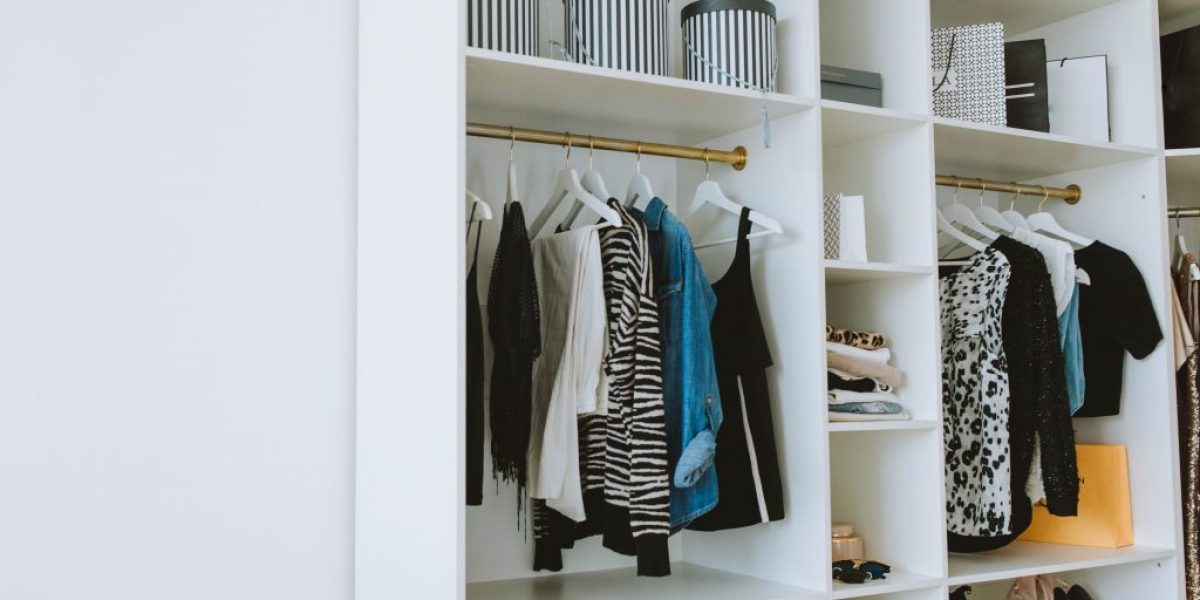14 Tips for Creating the Perfect Walk-In Wardrobe
With some careful space planning, a well-thought-out wardrobe to liberate your “floordrobe” and give your garments the attention they deserve, will not only make your day-to-day life easier but is a covetable interior feature that will add value to your home. Here we share our essential walk-in wardrobe checklist to help you create that perfect walk-in-wardrobe for your home.
1. Inventory
To start, make an inventory of all your clothes, shoes, bags and accessories in order to allocate the appropriate amount of hanging, shelving and other storage space. Once you have done this, be sure to also add enough extra empty space for your future purchases.
2. Maximising Space
For a walk-in wardrobe to function smoothly, you need approximately an extra square metre of walk-in space for every metre of a reach-in wardrobe. Measure everything to a T and sketch a to-scale layout on graph paper, making note of any peculiarities of the space. Consider taking a small slice from the footprint of an adjoining room to get the most out of your new space. Clothes on hangers generally need a 55-centimetre depth to hang clear of the back of the robe. A standard track is approximately ten centimetres wide, so 65 centimetres is the ideal depth of the hanging area back to front.
3. Prioritise Hanging
It is always important to have a good mix of hanging space and shelving but hanging should be prioritised; for while you can always add some additional drawers to your bedroom space, the same can’t easily be done for clothes hanging. Separate out your long and short garments and measure up how many metres you will need for hanging space for each length and then add 20 percent more. A ceiling height of 2.2 metres will give you two rows of short hanging – one on top of the other. Alternatively, you can do one row of long hanging for the likes of evening dresses with drawers or shelves incorporated underneath.
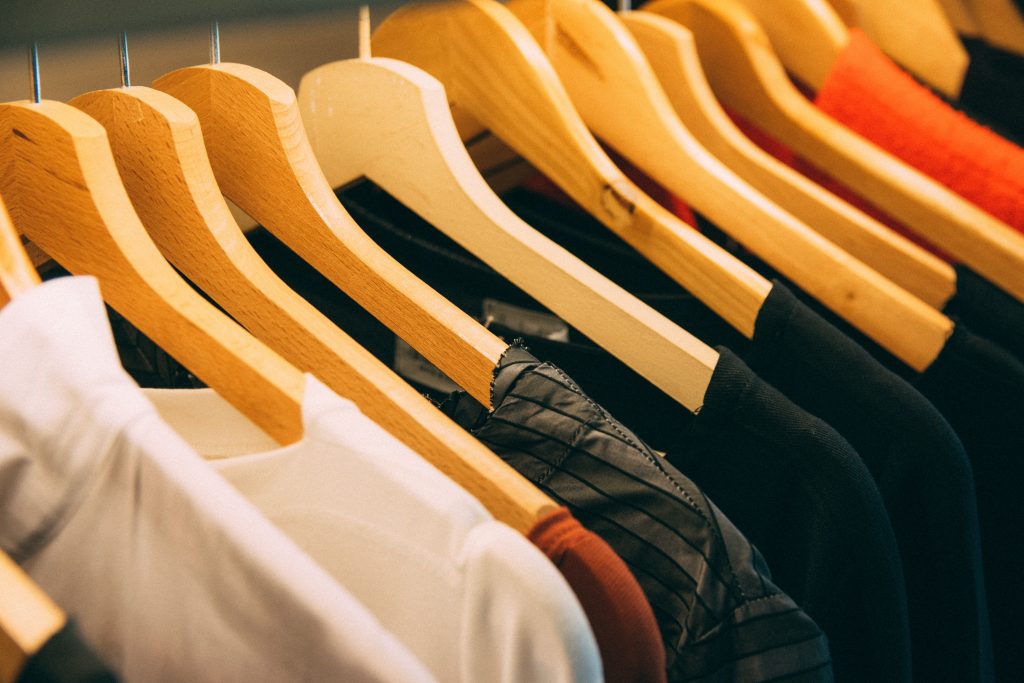
4. Redundant Space
Squeeze every bit of space out of your wardrobe area, including any high areas above hanging rails or doors. Furnish these useful lofty spaces with open shelving to hold less-used items that are not in frequent rotation, such as hat boxes and off-season items, making a note of their depths. For more expensive garments and accessories, opt for a set of closed cupboards or storage bin solutions to protect from dust. Consider storage for your off-season items also, packed into labelled, easy-to-hoist baskets or bins, or in space-saving vacuum storage bags on the topmost shelf.
5. Shoes
For easy identification and access, organise your shoes on flat open shelves with see-through plastic shoe boxes. These are perfect for stacking and will let you make a b-line for the right pair at a glance. Allow for approximately 20 centimetres of width per pair for shelf space. They are also usually only approximately 30 centimetres deep and therefore do quite well fitting into tight spaces if need be. If you can fit all your shoes into your wardrobe easily, look to place them on shelves at mid-height for easy viewing and access.
6. Smart Fittings
Put some forethought into the incorporation of clever fittings to maximise the utility of your wardrobe, such as slide-out shoe racks and tiled shelves, pull-out pants racks, space-saving hangers, non-slip storage for hanging slippery items such as silk scarves, versatile three-way swivelling hooks for belts and bags, carefully positioned robe hooks on a return or side wall and valet hooks, which are handy when assembling outfits for a trip, hanging items just back from the dry cleaners, organising an outfit for the next day or letting lightly worn clothes breathe. Consider allocating space for a folding step ladder against the wall nestled under the highest rod to reach the topmost shelving. Alternatively, there are specialty hinged pull-down fittings that enable you to pull an upper short-hanging rod down to within arm’s reach.
7. Shelving
Not everything needs to be folded into drawers. Shelving that is open without dividers won’t add significantly to your budget in the way that drawers can, which can also restrict the layout and waste space. Therefore, consider folding and stacking your garments such as T-shirts and sweaters to help keep your budget in check. These frequently used items are best placed on open shelves anyway where you can see and access them easily.
Make shelves approximately ten centimetres above any rods and approximately 35 centimetres deep to ensure you don’t start losing items to the back. Arrange foldables in up to 25-centimetre-high stacks so things won’t start to topple or migrate. Each stack will require approximately 30 to 35 centimetres of shelf length. Roughly 30-centimetre increments are optimal because folded clothes average 30 centimetres across and 35 centimetres deep. Shallower shelving can be considered if you are working with a tighter space.
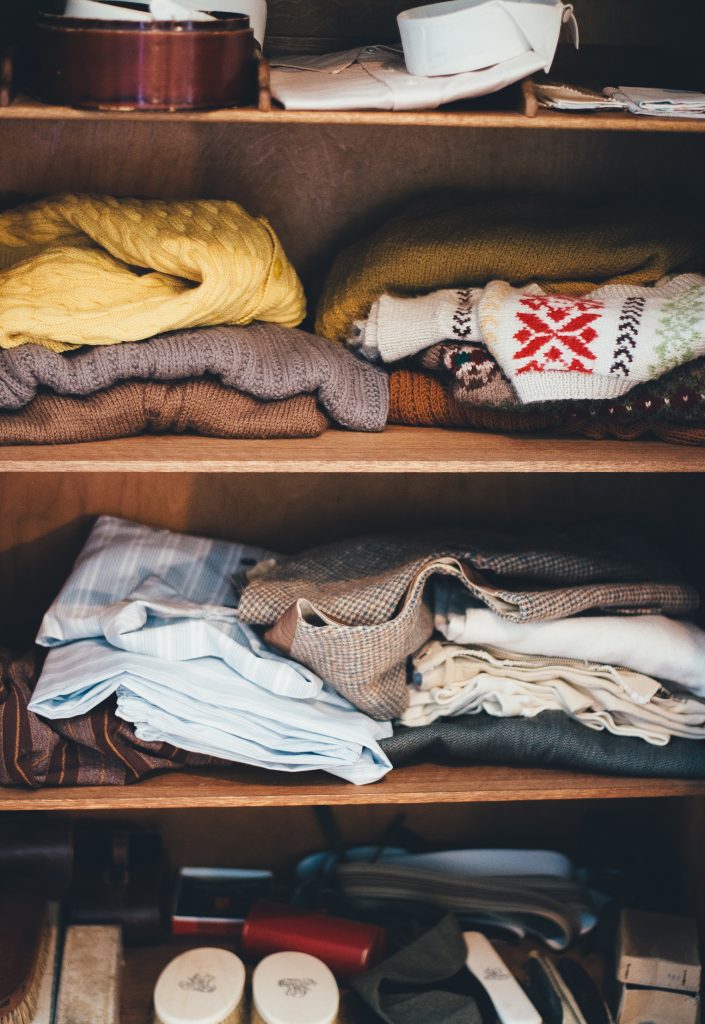
8. Drawers
Drawers are great for undergarments, socks and workout clothing, though not only can they be expensive but also lack in charm or that X-factor, so you might consider moving in a small statement dresser or lingerie chest for stashing your socks and underwear. If you have space galore and a bigger budget, consider the incorporation of an island bench or makeup station.
9. Lighting
Great lighting is one of the most important aspects of a good walk-in wardrobe for creating a beautiful, functional space. Not only does it need to reflect an outfit you choose accurately, it also impacts the overall feel of space. LED lights, which don’t create heat, give the best light for viewing garments and outfit planning. These can be placed at the base of your cabinetry and down the centre of your wardrobe for a discrete yet luxe look. Spot lights are also an invaluable addition as they can be adjusted to suit. Ultimately, opting for cool lights over warm lights will make your clothes stand out more. Smaller spaces can also be opened up with a skylight. So keep it cool or natural.
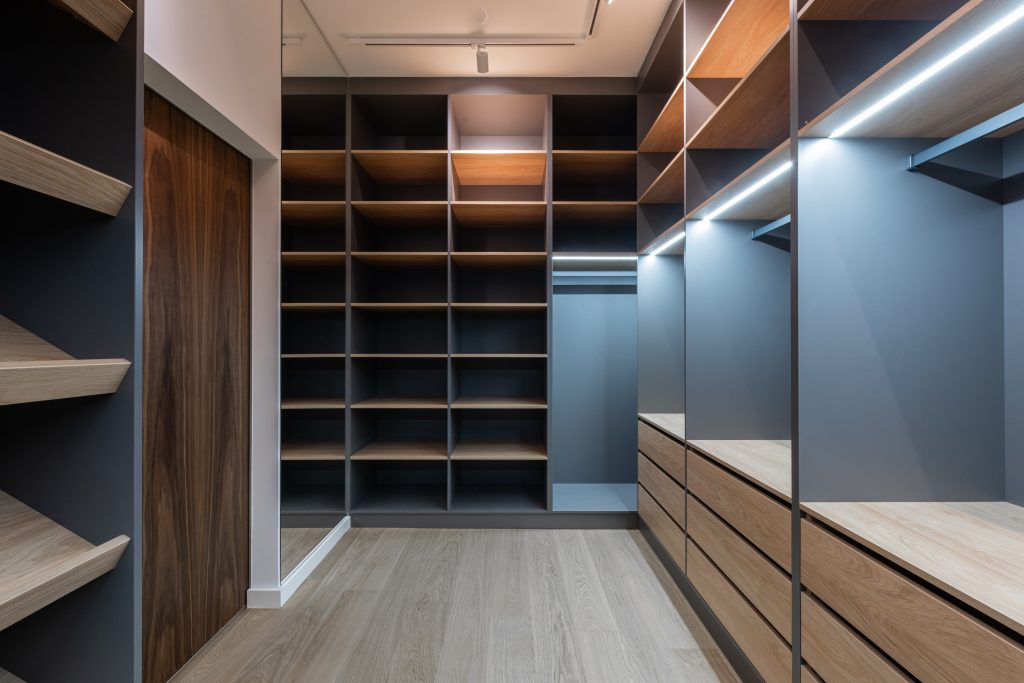
10. Close It Off
Look at finishing your walk-in wardrobe with space-saving pocket or sliding doors, which won’t encroach on the maximising of storage space.
11. Configurations
Consider whether you might go with an out-of-the-box ready-to-go wardrobe setup, a semi-custom design, or pull out all the stops with a fully-customised space. Modular systems offer in-built flexibility, which is extremely useful for switching up hanging rods and shelving to cater for the change of seasons.
12. Materials
For continuity and visual flow, opt for cabinetry that complements any existing designs in your home.
13. Finishing Touches
Consider finishing touches such as shelf-labelling and a stylish set of off-the-shelf storage bins. While you will want a colour palette that will make your clothes stand out, consider a dramatic, mood-boosting shade for your wardrobe’s walls – it is, after all, a mini room in its own right. Subtle luxe details such as stylish handles, soft-close mechanisms, identical coat hangers and pull-out storage bins will help to elevate the overall look and feel of your wardrobe. Last but not least, it is absolutely essential to install a full-length mirror. This is not only crucial for curating your outfits but offers the added benefit of providing the illusion of space especially if space is tight.
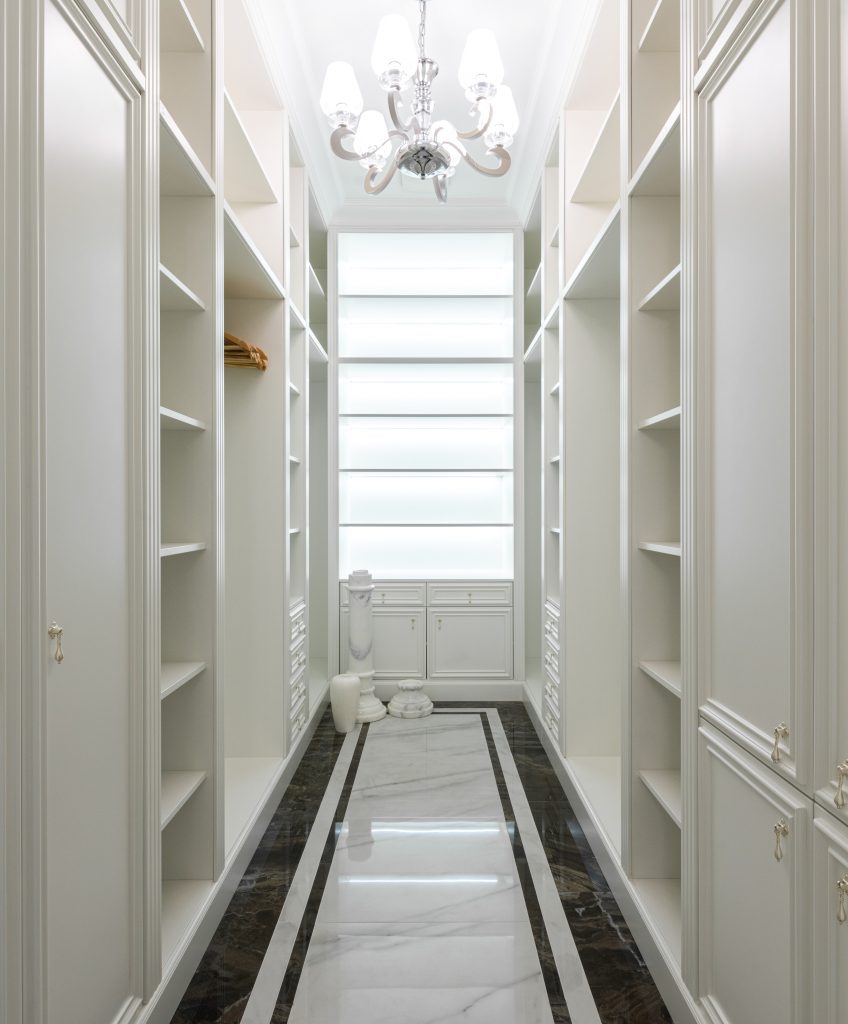
14. Sharing
If you are sharing your wardrobe, make a clear distinction between the two spaces, which doesn’t need to be 50/50. Be sure to organise the wardrobe as a team, for working out your habits, morning routines and what you tend to wear the most, can help dictate how much space each of you needs and also where to store things. Ultimately, keep the focus on organisation of your clothes and accessories that makes it easy for the both of you to get dressed when you need to.
